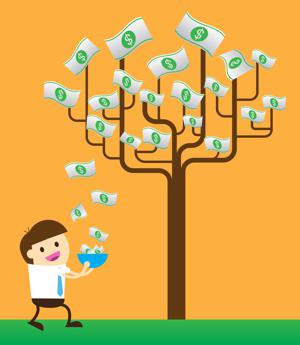
Following the accounting scandals that surrounded the collapse of Enron and WorldCom, Washington had to do something. In July 2002 Congress passed the Sarbanes-Oxley Act. Then in April 2003 the securities regulators hammered out a settlement with ten Wall Street firms. The law, as well as the settlement, was supposed to improve accounting and auditing and put a stop to misleading financial information. It was all intended to restore the public’s confidence.
Well, not everyone’s confidence was restored. In my Apr. 12, 2004 column, “Where’s the Cash?,” I argued that accounting numbers are subjective and malleable. So, don’t look at the bottom line; look instead at free cash flow. This is cash generated from operations minus outlays for plant and equipment, and it measures the amount of cash an owner can extract from a business. Cash flow is much more reliable and stable than earnings: Over the past 45 years corporations’ earnings volatility is about three times as high as cash flow volatility. If nothing else, focusing on cash flow will raise a red flag before you are tempted by another WorldCom.
But cash might be even better in an investor’s pocket than in a company’s bank account. In addition to common sense, this notion is based on sound economics and empirical evidence. Over time the total return on a stock will track the sum of its dividend yield and its dividend growth rate. Indeed, all but a sixth of the 6.5% real annual return on stocks over the past century consists of the sum of dividend yield and dividend growth. (The balance reflects a rise in how much investors are willing to pay to get a dollar of dividend-paying ability.) A cash dividend is a worthy substitute for growth—that is, for capital gains. At the moment, the two kinds of return are taxed at the same 15% rate.
In an ideal world, where management worked with only shareholders’ interests in mind, and where no fudging took place in financial statements, it wouldn’t matter whether businesses paid cash dividends the way Verizon (nyse: VZ) does or reinvested cash the way Berkshire Hathaway (nyse: BRKA) does. But given the imperfect world we live in, I want to see a healthy dividend before I buy a stock. There are two reasons, one positive and one negative.
The positive, intuitive idea is that companies adjust dividend payouts to signal prospects. Corporate insiders have better information about potential sales growth, margins and free cash flows than investors do. Dividends are simply an efficient way for insiders to convey this valuable information to the market. A rise in dividends signals better prospects, and a decrease signals that a company expects trouble. An increase in dividends signals that corporate insiders believe the company will have enough cash flow to sustain operations and complete investment plans. And, of course, make good on their dividend commitments.
The negative side of the explanation for the dividend-valuation linkage is equally intuitive. If firms are allowed to pile up cash beyond what is needed for good projects, management will dip into the cookie jar. Empire building, marginal projects, excessive compensation and gold plating are the typical pathologies.
If a company pays dividends, less cash will be available, forcing management—at the extreme—to resort to debt or equity financing. This leads to market discipline and a reduced likelihood of management pursuing goals that aren’t in shareholders’ interests. High dividend payouts keep management on a short leash. So much the better for stockholders.
To get a handle on how well an investor would have done by going for dividends, we can look at the Dow Jones Select Dividend Index. It is made up of 100 stocks that have had the highest dividend yields in the Dow Jones U.S. Stock Market Index and a flat to positive dividend-per-share growth rate for each of the past five years. These shares must also have a five-year payout ratio of 60% or less, implying that they have adequate earnings to cover dividend payouts. Also, stocks in the index must have a three-month average daily trading volume of at least 200,000 shares.
Over the last five years the annualized total returns on this dividend-focused index have been 11.6%. This compares with only 0.5% for the S&P 500. In addition, the dividend-focused index was less volatile than the S&P 500.
You can make a bet on dividend payers by owning an exchange-traded fund, the iShares Dow Jones Select Dividend Index Fund (nyse: DVY), introduced on Nov. 3, 2003. It has generated a 13.5% average annualized return compared with the S&P 500’s 11.2%. Expenses are 0.4% of assets yearly.
Author Steve H. Hanke

0 responses on "Go for Dividends"